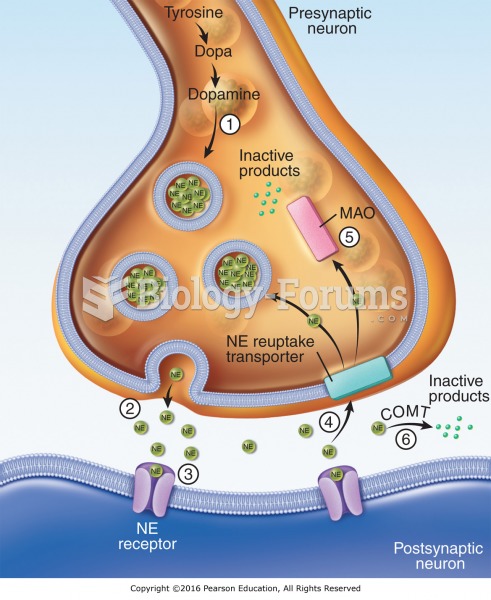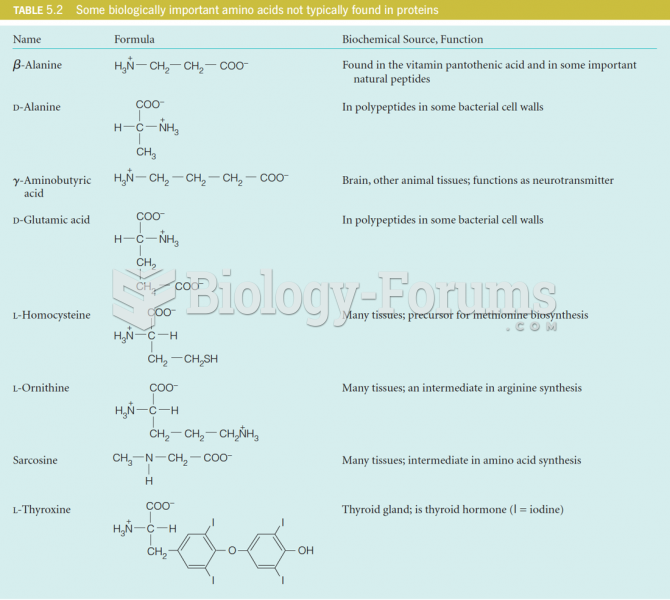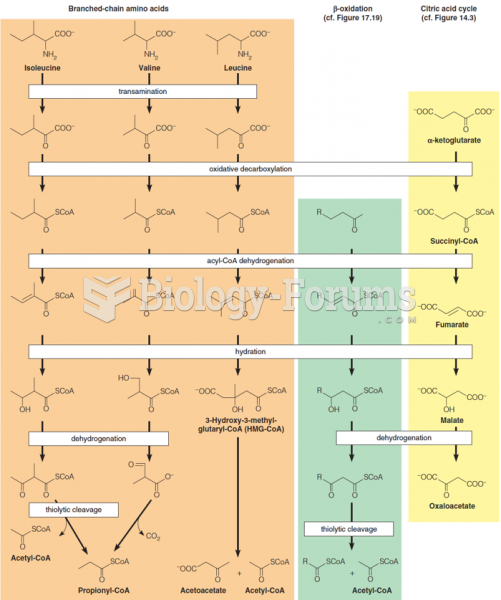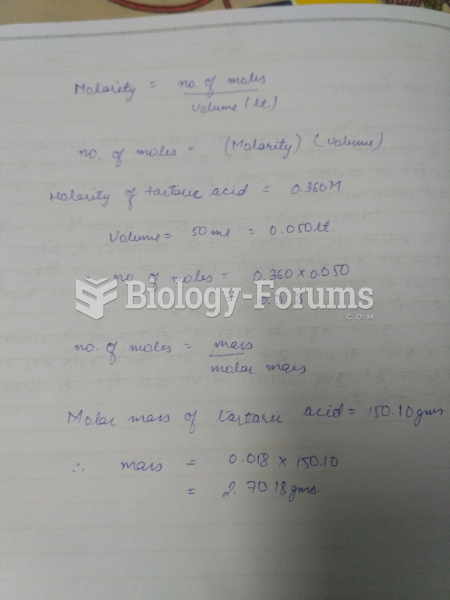|
|
|
Did you know?
This year, an estimated 1.4 million Americans will have a new or recurrent heart attack.
Did you know?
During pregnancy, a woman is more likely to experience bleeding gums and nosebleeds caused by hormonal changes that increase blood flow to the mouth and nose.
Did you know?
Bacteria have been found alive in a lake buried one half mile under ice in Antarctica.
Did you know?
In 2010, opiate painkllers, such as morphine, OxyContin®, and Vicodin®, were tied to almost 60% of drug overdose deaths.
Did you know?
Women are 50% to 75% more likely than men to experience an adverse drug reaction.
 Establishing a caring and trusting relationship helps the client come to terms with a terminal illne
Establishing a caring and trusting relationship helps the client come to terms with a terminal illne
 Life cycle of norepinephrine (NE): (1) NE is synthesized from the amino acid tyrosine; (2) NE is ...
Life cycle of norepinephrine (NE): (1) NE is synthesized from the amino acid tyrosine; (2) NE is ...





